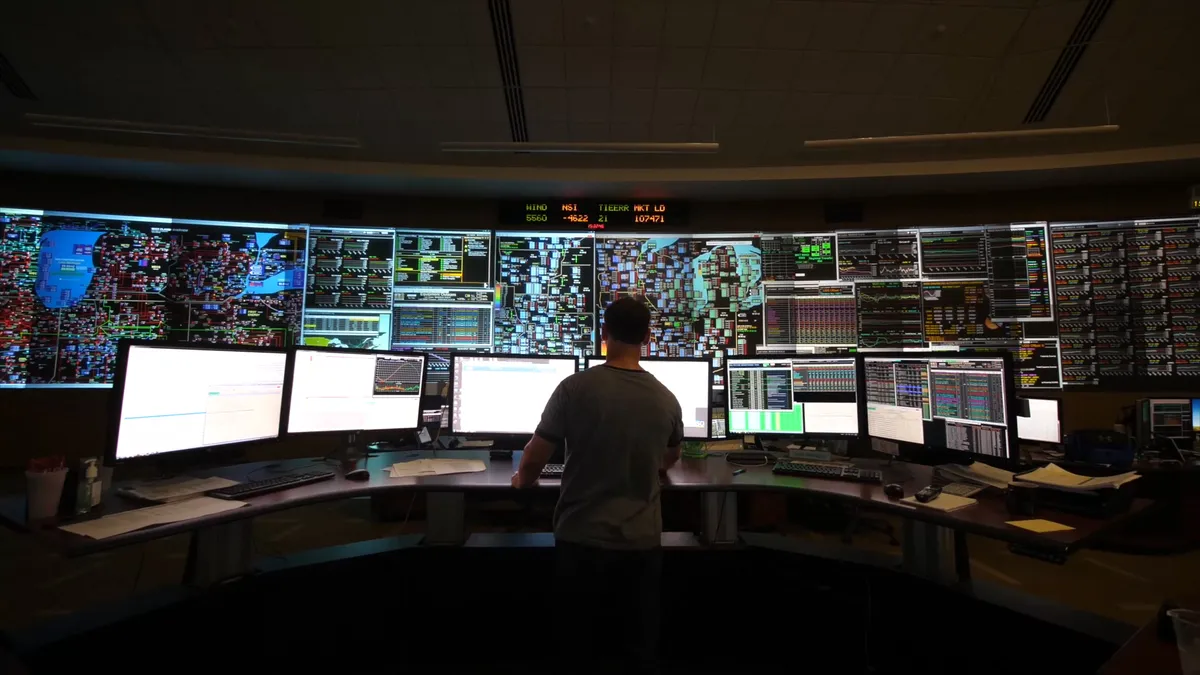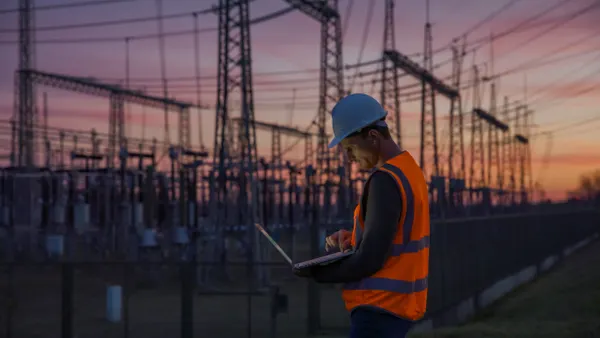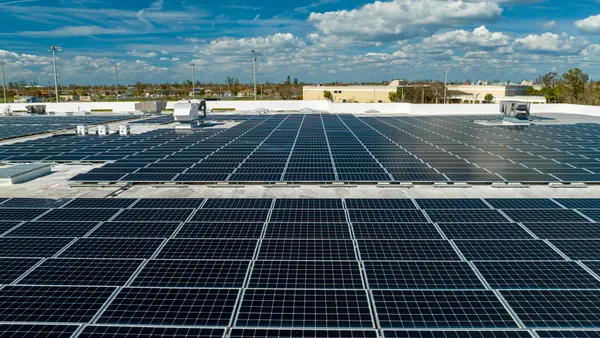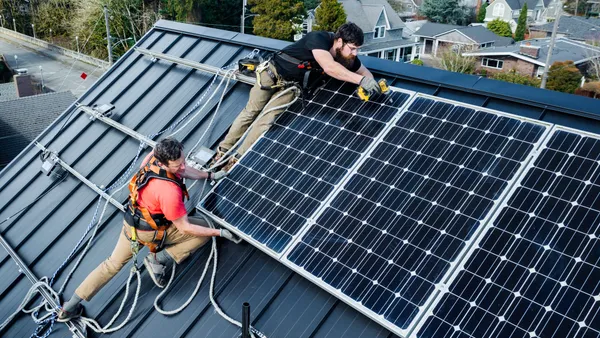Regulators around the country are refereeing heated debates between utilities and distributed resource advocates. A guidebook is in the works to help them, but general agreement on its approach masks persisting disagreements between the two camps.
Traditional utility and regulatory models are under pressure from the growth of distributed energy resources (DER), reports the Manual on Distributed Energy Resources Compensation, commissioned by the National Association of Regulatory Utility Commissioners (NARUC). New investments, new ways of allowing utilities to recover their costs, and new understandings of customer demand will be necessary to meet the challenge.
NARUC President Travis Kavulla called on the Staff Rate Design Subcommittee to develop the manual to provide a consistent framework for evaluating rate design decisions in the age of distributed energy resources.
“We need clear and economic price signals that do not overcompensate or undercompensate those customer-side actions,” Kavulla said in proposing the effort.
His instruction to the committee was to write “a practical, expert, and most importantly ideologically neutral guide that offers advice to the dozens of states who are grappling with this question, and yet do not have the resources to do it themselves,” said Chris Villarreal, the director of policy at the Minnesota Public Utilities Commission who worked on the effort.
A draft of the manual released ahead of a meeting of state regulators last week was met with general praise from stakeholders, but some sharp questions as well.
Phil Moeller, a senior vice president at the Edison Electric Institute, and Sean Gallaher, director of state policy at the Solar Energy Industries Association (SEIA) praised the manual, though their member companies often find themselves at odds in state rate design debates.
Both also urged special attention to the question of a cost shift (or cross-subsidy) from customers with distributed generation (DG) to those without. Utilities say customers with rooftop solar and other DG often do not pay their fair share for grid upkeep, while solar companies say their systems provide grid benefits utilities do not recognize.
Confronted with that question, general agreement on the approach of the NARUC manual turned to disagreement.
“We want DER but we want to make sure the rate structure is right to minimize cost shifts,” Moeller, a former Federal Energy Regulatory Commission regulator, told a NARUC gathering. “If we wait, we could have reliability issues.”
“There seems to be an assumption that revenue erosion from DER results in an inadequacy of cost recovery for the utility and therefore a shift of costs to non-participating customers,” Gallagher told Utility Dive. “You can’t just assume that. You have to do the math on all the benefits and costs. The manual could have been a little clearer on that.”
What cost shift?
DER are “turning the traditional model upside down by trending away from large, centralized generation connected to the interstate bulk transmission system to building and integrating new resources at the distribution level,” the manual begins.
NARUC defines DER as any resource "sited close to customers that can provide all or some of their immediate power needs and can also be used by the system to either reduce demand (such as energy efficiency) or increase supply to satisfy the energy or ancillary service needs of the distribution grid."
The debates sparked by the economic pressures DER puts on utilities and their rate structures are some of “the most divisive issues facing regulators today,” the manual notes. “These economic issues include revenue erosion and cost recovery issues as well as inter-class cost shifting apparent in traditional utility rate design and Net Energy Metering (NEM) discussions.”
The conclusion that there is a cost shift or cost recovery issue, however, depends on how DER benefits and costs are calculated, Gallagher said.
Based on multiple cost-benefit studies, “the utility may be getting less money from [DER] customers in their bill payments, but is also saving money as the result of the customer’s generation,” he added. “The overall net can be a profit to the utility and non-solar-owning customers.”
Utilities tend to make three fundamentally incorrect assumptions about rate design, according to “Rate Design for a Distributed Grid,” an answer to the NARUC manual from DER advocacy groups including TechNet, SEIA, Vote Solar, and The Alliance for Solar Choice.
Those assumptions are that, first, much of a utility’s costs are “fixed,” that DER do not significantly reduce the fixed costs or provide other benefits, and that volumetric rates and net metering “invariably cause costs to be shifted from low-usage customers and those who self-generate to high-usage ones.”
A complete analysis of the long term costs and benefits of residential rooftop solar shows the retail rate NEM credit actually delivers “net benefits to non-participating ratepayers” and “is more often than not a net benefit to the grid and all ratepayers,” the solar advocates’ paper argues.
Real benefits, or imagined?
Ashley Brown, director of the Harvard Electricity Policy Group and a former Ohio regulator, rejected the solar advocates’ paper out of hand.
Solar advocates “are making the assumption that investments in solar will displace other investments,” he said, “but solar energy in the U.S. is almost always off-peak so it cannot meet peak demand.”
Rooftop solar also cannot meet capacity needs because it is “intermittent and its first use is on-premises, so it is uncertain how much solar is exported to the system,” Brown added.
Solar advocates also claim rooftop solar saves money on the distribution system, the Harvard economist, who provided the utility perspective in a net metering debate at the NARUC meeting, noted.
While that is “theoretically possible,” Brown argued, “I would never ask consumers to pay for something that theoretically might be provided at some unpredictable time. They describe everything that could theoretically be of benefit and assume it is.”
Jim Lazar, senior advisor at the Regulatory Assistance Project, contested that claim. Many good long-term work has been done on the value of solar to a utility’s system, he said.
Value of solar (VOS) studies done for commissions in Minnesota, Maine, California, Nevada and Mississippi all asked the same the fundamental question: Over the life of a solar array, does it provide net benefits to the utility or result in net costs?
There is no accepted methodology for doing such value of solar calculations, Brown objected. Integrated Resource Plans used by utilities are based on long term projections of prices, “but they are constantly adjusted to reflect changing realities,” he said.
“I don’t know of anybody in their right mind who based on their forecast of energy prices signs a 20 year contract for energy. That would be lunacy.”
Power purchase agreements signed by utilities, he acknowledged, typically involve 20-year contracts based on long term projections of renewable energy and natural gas prices. But “only a fool would price something for 20 years based on today’s fuel price projections.”
The NARUC manual does, however, describe “value of resource” and “value of service” methodologies which can include long-term projections.
“A customer would be charged for its consumption, including distribution, generation, transmission, taxes, and other fees or riders, which are often calculated based on total consumption,” it reports.
“For its production, a customer would then be compensated (or charged, if the resource imposes a cost) at a separate rate based on a number of factors, as determined by the regulator,” it goes on.
Where there is less DER penetration, “Value of Resource may make more sense,” it says. “If DER is showing significant penetration, then the Value of Service may make more sense.”
Short-run vs. long-run costs
A utility does not build new centralized generation plants in the short run, Lazar noted, so new solar only avoids the cost of fuel to generate electricity at a distant power plant and the cost of transmission to deliver it to the utility’s distribution system.
“But in the long run,” he pointed out, “that plant will retire.”
Most value-of-solar studies show distributed solar’s long run benefits to the distribution system are worth $0.10/kWh to $0.16/kWh, according to Lazar.
“The national average retail rate is about $0.11/kWh,” he said, “so the distributed solar is worth more than the retail rate NEM price the utility pays rooftop solar owners for it, and in the long run the system is better off.”
From a short-run perspective, the utility pays about $0.05/kWh for fuel costs and line losses from an existing power plant, Lazar estimated. “If the utility pays $0.11/kWh for DER, it incurs about $0.06/kWh of cash outlay that has to be covered by non-DER owning customers.”
The NARUC paper’s shortcoming, he said, is in using a short-run perspective rather than a life-of-asset perspective because that inevitably leads to the conclusion there is a revenue shortfall and a shift of costs.
The short-run perspective, Lazar said, “compares a short-run impact on the utility’s costs to operate an existing resource over the next year or two to a long-run, new, utility-built resource,” Lazar said. “It is an apples to oranges comparison and results in the perception of a cross-subsidy.”
A long-run perspective offers “an apples to apples comparison between a new utility-built resource that will have a long life and a customer-owned solar resource that will have a long life,” Lazar said. “It is a more legitimate comparison.”
That decision was a cognizant one, Villarreal said.
“Economists usually say in the short term all costs are fixed and therefore they all need to be recovered,” he pointed out. “They also say that in the long term all costs are variable.”
The manual points out that utilities tend to focus on short term fixed costs, leading them to see the “overwhelming majority” of their costs as fixed, Villarreal explained. This inclines utilities to seek recovery of those costs through rate designs like demand charges and fixed charges. “But in the long term, a much smaller percentage of costs are fixed.”
Each state’s regulators must understand this and then decide whether to focus on the short term or the long term, Villarreal added. “The manual hopefully provides pros and cons of each, without reaching a conclusion.”
Timing rate design reforms
Beyond persistent debates over the cost shift and value of DERs, the NARUC manual provides some guidelines for when utility regulators should take action on rate design for distributed resources.
The manual has six overarching themes, Villarreal said, ranging from the relationship of short-term and long-term costs to cost allocation and understanding how technologies like AMI, DERMS, and ADMS allow DER growth.
“The last theme,” Villarreal highlighted, “is the importance of monitoring DER adoption rates and being aware of them.”
Most states are still in the low level of DER adoption, as described in “Distribution Systems in a High Distributed Energy Resources Future,” a 2015 paper from the Lawrence Berkeley National Lab. At this stage, regulators may prefer simple rate designs like NEM that allow incipient technologies to grow.
At a penetration of about 5% of the distribution system’s peak load, “regulators may need to find other rate designs and means to compensate to reflect the impacts of DER at specific times and locations on the system,” Villarreal said.
Above a DER penetration level of about 8% to 10%, regulators need to focus on rate designs that allow for “multi-sided transactions to occur between DER and the distribution utility, but also to and from customers,” the manual reports. Such transactions would take place through “distribution level markets” and would require the distribution utility to play “a market facilitator role.”
By being aware of the adoption rate, regulators and utilities can anticipate and plan for changes, Villarreal said.
Lazar agreed. “Hawaii allowed retail rate net metering until solar was no longer reducing the system’s peak demand, but now new solar systems only get a fuel cost savings credit,” he said. “When a technology like solar reaches a 5% of peak penetration, regulators should start thinking about rate design. At about 10%, they should change it.”
Speaking at the NARUC town hall, Moeller told stakeholders the manual shows regulators are taking the challenge of DER seriously. That’s important, he said, because “these challenges don’t solve themselves and they don’t go away.”
“If we get this right, we can facilitate technology innovation,” he said.












